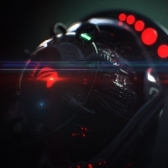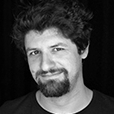Leaderboard
Popular Content
Showing content with the highest reputation on 04/17/2022 in all areas
-
JangaFX has released nine new free gaseous fluid simulations of types commonly used in VFX and game development work, including fire, smoke, dust, tornados and clouds. https://jangafx.com/software/embergen/download/free-vdb-animations/4 points
-
Yeah, did some animations with corona, too, but we are switiching slowly to octane. corona is easy to learn and creates instantly good looking visuals. but we had lot's of problems with motion blur, teamrender, texture paths with dropbox/subs (remote work due to corona). Here some examples: With Character Animation Some basic x-particles stuff (particles as trails) Aaaand in my opinion it doesn't render anisotropy correctly: (Look at the saw blade) Crap, did someone press buttons in the forum? I only copied links, now I see the videos embedded?2 points
-
I really hope the unreadable icons are being fixed, it really pains to work in the new style but not on all These white line icons are really hard on the eyes and honestly I resorted back to S23 even though I have a 25 subscription And Im a 20/20 eyesight guy on a 27" 1440p The old icons were always really outstanding compared to other apps, they are timeless modern and very readable. Also please, boolean needs an update. And voxel performance. Volume builder is so good, but I just need more performance or ways to optimize.1 point
-
Let´s take some very simple example (since don´t see your scene file) with just plane object... 1, Added simple plane object, created material with checkerboard for better control of streching 2, Converted to polygonal object. Now you can see UVW tag was created (this is most simple example, so you could see polygonal mesh and UV mesh looks equaly) From now material use this UVW "map" for applying textures/materials. 3, Created polyselection/stored and applyied material on selection. Now you could see no stretching materials since was not modified polygonal/UV mesh. Material is applyied on selection nicely without stretching 3a, Now it you change polygonal mesh (moving points to the side), material became stretching. It´s because was changed polygonal mesh only and UV mesh hold original state. Since mesh polygons are enlarged and its uv polygons are not changed, material/texture representation in viewport is stretched... (There´re 2 options now. One is "adjust" uv mesh to polygonal (enlarge to same ratio/relative dimensions, this is reason why is used checkerboard to adjusting this) or "Reset" UV map (in real this means creating new UVW tag) 4, So, create copy of plane, remove material and uvw tag from it. Now you could see condition for creating uv map is changed since polygonal mesh is different as at startup. 5, Apply material on object with parametric projection (cubic in my example). Since currently object don´t have uvw tag, applying uvw projection doesn´t make sense.You could see texture is applyied correctly. 6, Now its time to create new uv map. Select texture tag and object and from menu select Generate UVW coordinates command 7, As you could see, newly created uv mesh is not fitted into 0-1/0-1 coordinates and needs to be repaired with fit UV to canvas command 8, Now when is created/adjusted uv mesh, you could change projection from parametric to uvw mapping (if it was not done automatically while creating new uvw coordinates. Texture/material now looks identically as on previous plane even polygonal mesh was "adjusted" by moving points. 9, Now with applying polyselection to material restriction you can see no stretching in result. Since now is taken into account this newly created uv mesh. Now when finished adjusting polygonal mesh and created new uv´s , material/polyselection could be removed/applyied again without stretching (ofcourse, moving some points again "brake" current "connection" between polygons and uv´s and material again became stretched...) Maybe this you ment like "reset". If you don´t want re-create uvw tag again and again after changes on polygonal mesh, you could do it manually by adjusting uv mesh in uv editor by an eye for some sufficient result which is enough for you...1 point
-
No, you HAVE got answers to your question, but you appear to be lacking a fundamental understanding of how UVs work which may be preventing you from taking them in ! I will endeavour to explain it in the simplest terms, thusly: When a primitive is created its UV data is also created along with its physical properties. So each polygon in a primitive has an equivalent UV polygon. Initially those 2 things are identical, and if they stayed that way you would never have a problem. But a UV canvas is a 2D square, and the chances are your mesh is not ! Take the Example of a Plane Primitive, which does start off square. That has a Flat projection baked into its UV by default, which is generally speaking the most helpful for that object. Now, when you make that editable its UVs become permanently baked into the square UV canvas, and for the first time they are directly accessible to us. Anyway, so you now continue modelling, and you (presumably) change the form of the plane into a different shape, or at least move some of the points away from their initial positions. So the physical points move, but the UV equivalents do not move with them, because they need to stay on the square UV Canvas. and so then we have discrepancy between the physical size of the polygons, and the physical size of their UV equivalents on the UV canvas. This will be unnoticeable until we add a texture that is not a single flat colour. And as soon as we do we will see distortion in that texture wherever the size or the aspect ratio discrepancy exists. So, in the normal order of operation we complete the modelling, whilst entirely ignoring what the UV is doing so far. THEN we have to decide what to do with materials. If we decide we can use any of the standard projections, then the UVs become unimportant, and it doesn't matter if they are not right, because now the texture projection is not based on the actual polys, we are just projecting a texture on to them. But if no standard projection will do, then we have to use the UV mapping mode instead, and thereby have to worry about what the UVs are doing, which is where UV 'unwrapping' comes in. That is the process of making sure that your UV polys match your edited physical ones on the model in terms of relative scale and aspect ratio, which returns the texture to looking correct again because it is no longer distorted. And of course, if you then change the points or polys in the model after doing that, then you will need to UV unwrap again to match the new point positions, which should answer your question about why this happens to your paths when you make them wider. It also explains why I was suggesting you tried a flat projection, because then it wouldn't matter what you did to the paths at any stage because the texture is independent of the geometry. CBR1 point
-
I've been playing with UE5 for a few months now, but only in the last three weeks things have started to click really fast. I'm absolutely amazed at the realtime capabilities and photorealism of the engine. You can create an entire procedural forest with thousands of plant instances reacting to the wind and tons of high poly 3D scans and see it all in real time with global illumination. I haven't been this excited about a 3D program since I started learning 3D fifteen years ago. It's... unreal.1 point
-
If you move the points you also stretch the projected texture if you do not adjust the UVs to correct for this. The UVs are basically the formula used to match a point on the geometry with a corresponding point on the texture. If you change one side of the equation the other changes as well. That is why it is highly recommended to get all your modeling done before you start texturing.1 point
-
Hi Right now, what i wish for this new version is just simple stuff. 1- Correct all bugs from the previous versions. I'm currently stuck at version 25.015 since the newer versions are problematic and filled with export issues. These issues are big problem since i work in a shared pipeline with other apps. There is a list of well know bugs from the previous versions and some from this new one. 2- it was mentioned before but i also reenforce. Solve the stability problems. C4d is not the super stable soft as before. I've currently lots of problems with my UI crashing and driver issues that i cant solve by changing drivers wich means its a c4d problem. I guess this was part of the transition from openGL to directx, but now its time to fix that. 3 - enhance the asset browser. Since maxon removed the content browser that was a good tool, this one is still misses a lot of good features. I really would like to access folders from my computer hard drives instead of importing assets one by one to some kind of database. I also would like to have some sort of batch import elements to the database folders instead of one by one crap. Thats a waste of time. 4 - enhance the material node editor. This material editor its not as good as 3ds max slate. Why the hell cant we have a multi material node editor (corona and octane editors are multi material). How can we easily share shaders, maps, or data between materials witout using some sort of external assets?? 5 - instance deformers and generators. There was an old plugin called multideformer (https://cinemaplugins.com/freestuff/multimod/) that could combine and instance modifiers across multiple objects. This was a great tool. Why cant we have this sort of instancing power? and in the end i'm always asking for the same since i'm an animator and rigger as well. We need vertex weight paint layers and decent Animation layers without the same crappy issues of the motion tag. is thats asking to much? perhaps... cheers1 point




